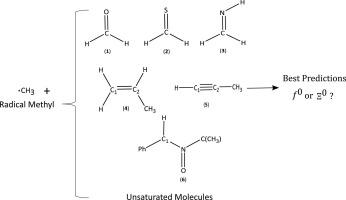Separation and Purification Technology ( IF 8.1 ) Pub Date : 2022-01-17 , DOI: 10.1016/j.seppur.2022.120503 Minghui Xiang 1 , Zhen Lu 1 , Siyang Li 1 , Hui Li 1 , Chen Wang 1 , Jin Zhang 1 , Lide Jin 1 , Chunyang Li 1

|
In recent years, new heterogeneous catalysts derived from metal organic frameworks (MOFs) have been widely used in advanced oxidation processes (AOPs). In this work, zeolite imidazole framework-67 (ZIF-67) and sulfide nanozero-valent iron (S-Fe) were used as precursors to prepare S-Fe/Co bimetallic nanoparticles embedded in graphitized carbon (S-Fe/Co@GC) and used to activate peroxymonosulfate (PMS) to degrade tetrabromobisphenol A (TBBPA). Morphological and structural characterization indicated that S-Fe/Co@GC compared to pre-carbonization, the pore size of the material became larger, formed a graphite carbon skeleton with excellent electrical conductivity. In a 0.2 g/L S-Fe/Co@GC and 0.6 mM PMS system, 96.1% of TBBPA (20 mg/L) was degraded within 30 min, and the degradation yielded a total organic carbon (TOC) removal of 56.2% in 60 min. This excellent catalytic activity was attributed to the synergistic effect of graphitic carbon, sulfide nanozero-valent iron and metallic cobalt. Radical quenching experiments and electron paramagnetic resonance (EPR) technology indicated that reactive oxygen species (ROS) included HO•, SO4•−, O2•− and 1O2, among which O2•− plays a leading role in the degradation of TBBPA. Based on the LC-MS analysis of the degradation intermediates, the degradation pathway of TBBPA in the S-Fe/Co@GC/PMS system was proposed. In addition, S-Fe/Co@GC showed a low ion leaching rate, and the regenerated S-Fe/Co@GC still had high catalytic performance. This work will extend the development of MOFs encapsulate functional nanoparticle materials for environmental remediation.
中文翻译:

磁性核壳S-Fe@MOF衍生物杂化物活化过氧单硫酸盐高效降解四溴双酚A
近年来,金属有机骨架(MOFs)衍生的新型非均相催化剂已广泛应用于高级氧化工艺(AOPs)。在这项工作中,沸石咪唑骨架67(ZIF-67)和硫化物纳米零价铁(S-Fe)作为前驱体制备了嵌入石墨化碳的S-Fe/Co双金属纳米粒子(S-Fe/Co@GC ) 并用于激活过氧单硫酸盐 (PMS) 以降解四溴双酚 A (TBBPA)。形貌和结构表征表明,与预碳化相比,S-Fe/Co@GC材料的孔径变大,形成了具有优异导电性的石墨碳骨架。在 0.2 g/L S-Fe/Co@GC 和 0.6 mM PMS 系统中,96.1% 的 TBBPA (20 mg/L) 在 30 分钟内降解,降解产生的总有机碳 (TOC) 去除率为 56.2%在 60 分钟内。这种优异的催化活性归因于石墨碳、硫化物纳米零价铁和金属钴的协同作用。自由基猝灭实验和电子顺磁共振 (EPR) 技术表明活性氧 (ROS) 包括 H2O•、SO 4 •-、O 2 •-和1 O 2,其中O 2 •-在TBBPA的降解中起主导作用。基于降解中间体的LC-MS分析,提出了TBBPA在S-Fe/Co@GC/PMS体系中的降解途径。此外,S-Fe/Co@GC表现出较低的离子浸出率,再生后的S-Fe/Co@GC仍具有较高的催化性能。这项工作将扩展 MOF 封装用于环境修复的功能性纳米颗粒材料的开发。











































 京公网安备 11010802027423号
京公网安备 11010802027423号